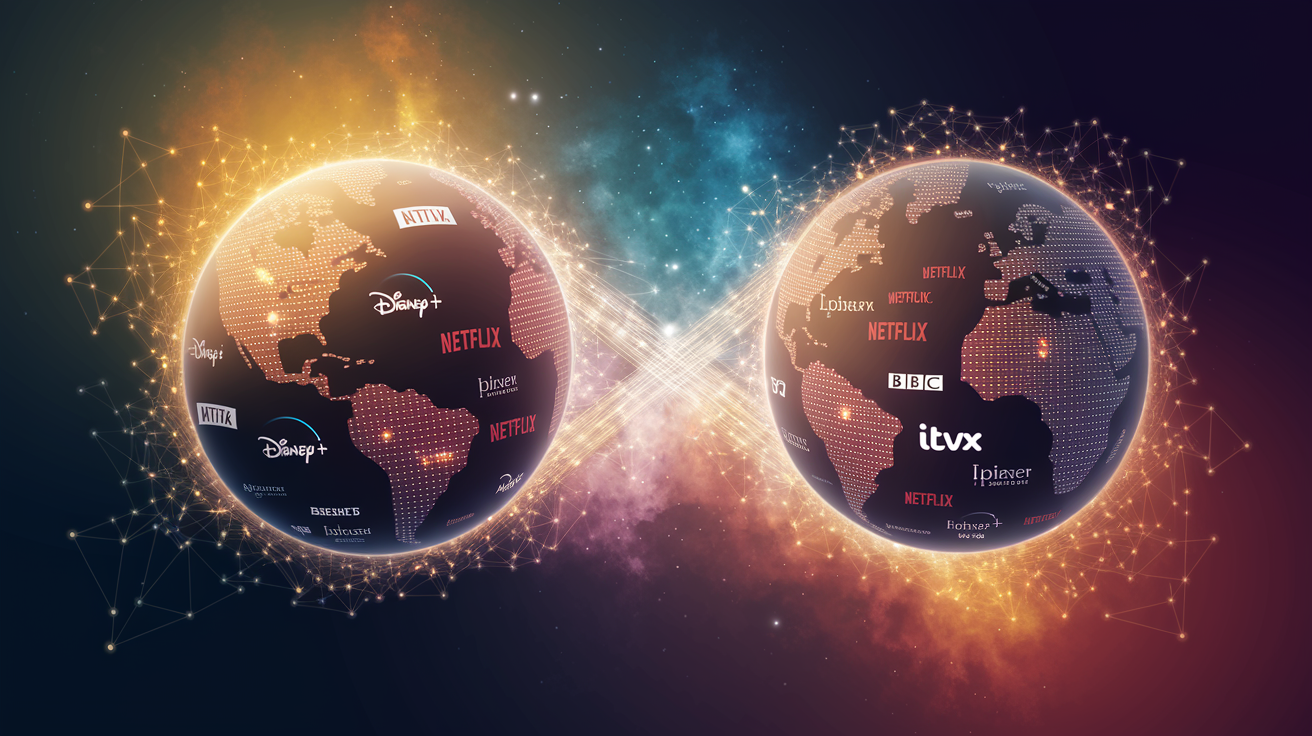The streaming landscape has become a battleground, where American giants like Netflix and British services like BBC iPlayer compete for supremacy. While the USA stands out with a global presence, the United Kingdom focuses on locally rooted content. This article highlights the differences in global scope and the challenges that media companies in both countries face. The chapters provide insights into the strategic approaches of companies, market dynamics, and the difficulties to overcome.
Global Expansion of Streaming Services: An Insight into the USA and the United Kingdom

The rapid rise of streaming services in recent years has significantly transformed the entertainment industry. The USA and the United Kingdom prove to be two central markets, whose differences and similarities regarding their global reach are noteworthy.
The American market, dominated by giants like Netflix, Amazon Prime Video, and Disney+, demonstrates how strategic market adjustments and a wide range of original content can create a comprehensive international presence. In particular, Netflix has managed to establish itself in various cultural contexts through investments in local content, thereby aiding in the acquisition and retention of a global audience. Subscriptions and user numbers reflect this, as more than half of YouTube users in the USA also access Netflix content. These synergies between platforms strengthen market positions and expand the influence of these services.
In contrast, British services like BBC iPlayer and All 4 maintain a more locally oriented identity. Their content reflects the cultural landscape of the United Kingdom and enjoys popularity primarily at a national level. However, international platforms such as Netflix and Amazon Prime Video have also taken root in the UK, expanding their market share, not least due to the integration of local productions. In the UK, the overlap between YouTube and Netflix users is even more pronounced than in the USA, indicating a well-adapted market strategy and a strong market presence.
In terms of revenue and market share, the USA has an advantage, as platforms dominate due to a diversified offering and significant advertising revenues. It is therefore anticipated that Netflix will soon surpass YouTube’s advertising revenues, highlighting the growth potential of the subscription model. However, YouTube maintains its position as the leading platform for video content due to its strong user base and monetization opportunities through advertising.
The dynamics of these markets are equally influenced by technological innovation. Services in both countries are increasingly focusing on VR and AI to create enhanced user experiences. These technologies not only offer exciting new formats but also lay the groundwork for the next stage of development in streaming. Valuable advancements in network technology such as 5G are ensuring more stable and faster transmission.
In summary, the USA and the United Kingdom demonstrate how different market strategies and local priorities can influence the reach of streaming services. While the USA continues to strengthen its global footprint through innovation and a broad array of content, the UK remains prominent in providing high-quality, culturally specific content that is appreciated both nationally and partially internationally.
Media Landscapes in Motion: Challenges and Paths in the Streaming Era

Media companies in the USA and the UK are in a critical phase of transformation, strongly influenced by digital innovation and global development. Digital transformation is a central factor that has dramatically changed the media landscape in the USA. The rise of online media as a source of information and the growing influence of social networks on advertising budgets have overshadowed traditional media channels like print and radio. The advertising market, which in the USA is heavily dependent on digital platforms, shows continued growth in digital advertising spending, putting traditional media under pressure.
At the same time, the US market faces economic uncertainties, particularly due to concerns about stagflation, which could impact the investment climate. The loss of trust in traditional media due to misinformation also contributes to a downward trend. Media companies must constantly respond to technological changes to remain competitive, which often requires significant investments.
In the UK, the digital advertising market is rapidly growing, with online video advertising and social media advertising taking a leading role. However, traditional media such as television and radio remain significant, deeply rooted in British media culture. Despite the effects of Brexit, which could affect investor confidence, the value of the advertising market will continue to grow, as shown by forecasts for 2023. The UK faces strict regulatory demands, which will become even more complicated in the digital sphere, as companies must continue to adapt to rapid technological changes.
Common challenges that both countries face concern adapting to technological disruption and evolving user behavior. The constant pressure to adapt digital strategies to reach a young, technology-oriented audience is ever-present. Last but not least, economic insecurity remains a dominant theme, affecting the media industry across the Channel.
Therefore, media companies in the USA and the UK must become agile players, capable of navigating between new technological opportunities and the ongoing challenges of the global market. This requires not only innovative approaches but also thoughtful strategic planning, in order to emerge in a constantly evolving media landscape.